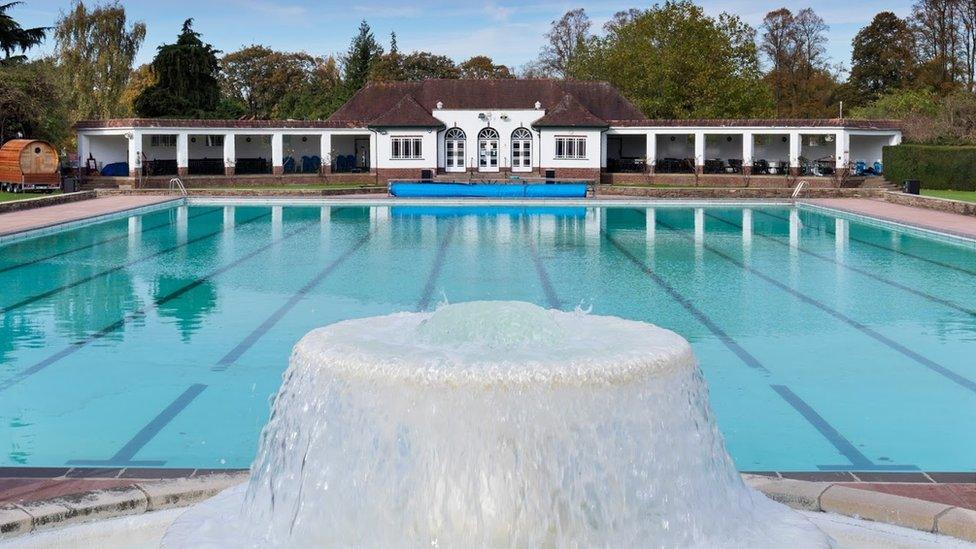Historic England: Seaside heritage sites given listed status
- Published
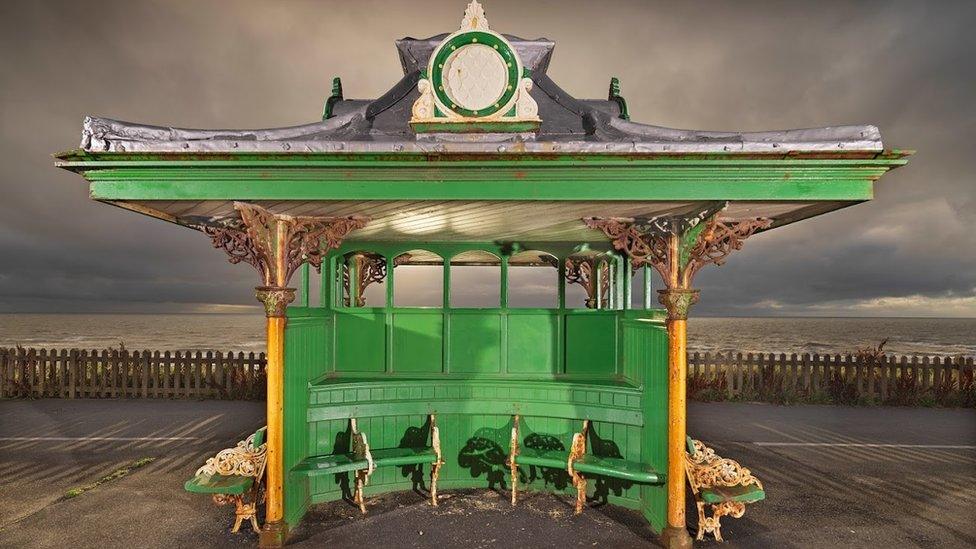
Eight promenade shelters built between 1903 and 1904 have been granted protection
Blackpool's seafront promenade shelters are among six seaside heritage gems in England to be awarded Grade II-listed status.
Elsewhere, a boathouse in Devon built in 1937, Hythe Pier in Hampshire and Skegness Town Hall have been given protection by Historic England.
An obelisk in Leigh-on-Sea, Southend, has also been awarded listed status.
Heritage minister Caroline Dinenage said she was delighted the seaside gems would be "recognised and protected".
Announcing the new listings, Deborah Mays, from Historic England, said: "Our seaside towns are a huge part of our national story.
"I'm thrilled the significance of our seaside heritage has been recognised with these six new listings."

Colonnades and promenade shelters in Blackpool
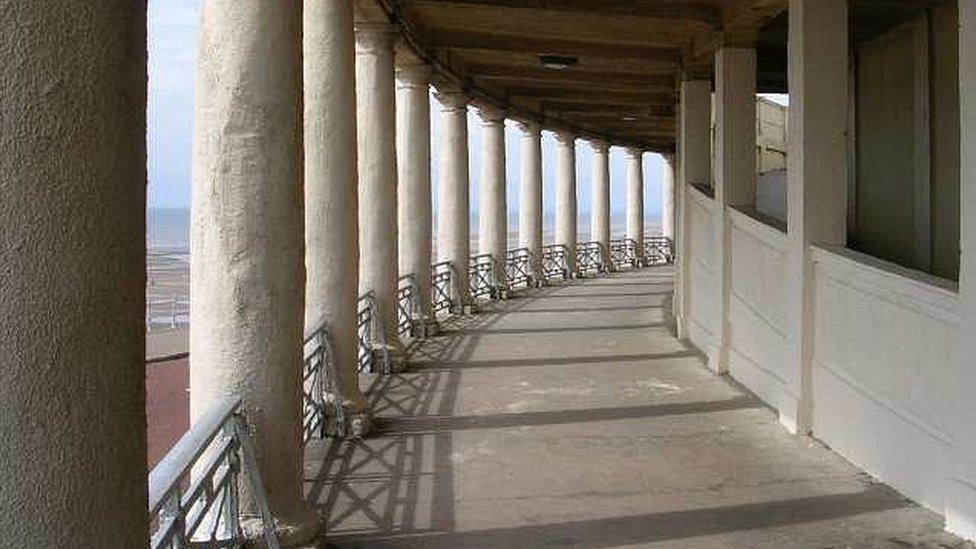
The Middle Walk colonnade was built between 1923 and 1925
The Middle and Lower Walk colonnades are reinforced concrete structures between Blackpool's three-level promenade stretching about 0.6 miles (1km).
The Lower Walk colonnade was built in 1923 as a link between the upper and lower levels, while the Middle Walk colonnade was built between 1923 and 1925 as a strengthening structure and to vertically stack the Upper Walk over the middle level and allow the tram tracks to be moved to free up road space for cars.
The examples of inter-war seafront improvements - within along Blackpool's North Promenade conservation area - demonstrate neo-Classical detailing and technically sophisticated cantilevering, Historic England said.
Eight of Blackpool's promenade shelters, most of which were made between 1903 and 1904, are also being added to eight which already have Grade II-listed status.
Commissioned by Blackpool Corporation, the Edwardian shelters were built by renowned iron-founders Walter MacFarlane and Co (MacFarlanes), of Glasgow and the Lion Foundry Company, of Kirkintilloch.

Hythe Pier in Hampshire

It is believed to be the oldest continuously operating public pier train in the world
Stretching 2,100ft (640m) from the centre of Hythe out into the channel of Southampton Water, the pier opened in 1881 to facilitate ferry steamers travelling between Southampton and Hythe and was one of the main access points to the New Forest.
According to a map from 1575, a ferry operated from Hythe to Southampton as early as the Middle Ages, making the pier a historically significant transport site that still functions now.
In 1922, an electric railway was built on the south side of the pier which is still running today.
Historic England believe it to be the oldest continuously operating public pier train in the world.

Coronation Boathouse in Bantham, Devon

Coronation Boathouse, Bantham
Sitting on the estuary of the River Avon, within the South Devon area of outstanding natural beauty, the Coronation Boathouse was built to celebrate the coronation of King George VI in 1937.
It was designed by (John-Baptiste) Sebastian Comper for Lt Cdr Charles E Evans RNVR, the owner of the village of Bantham and its surrounding area, which is marked by the Royal insignia and wall plaque.
The boathouse draws on historical design elements such as Elizabethan traditions and maritime themes, uniting local materials and building traditions with early 20th Century craftsmanship, Historic England said.
The next-door store building which has stone walls and thatched roof is also Grade II-listed.

The Crow Stone in Leigh-on-Sea, Southend
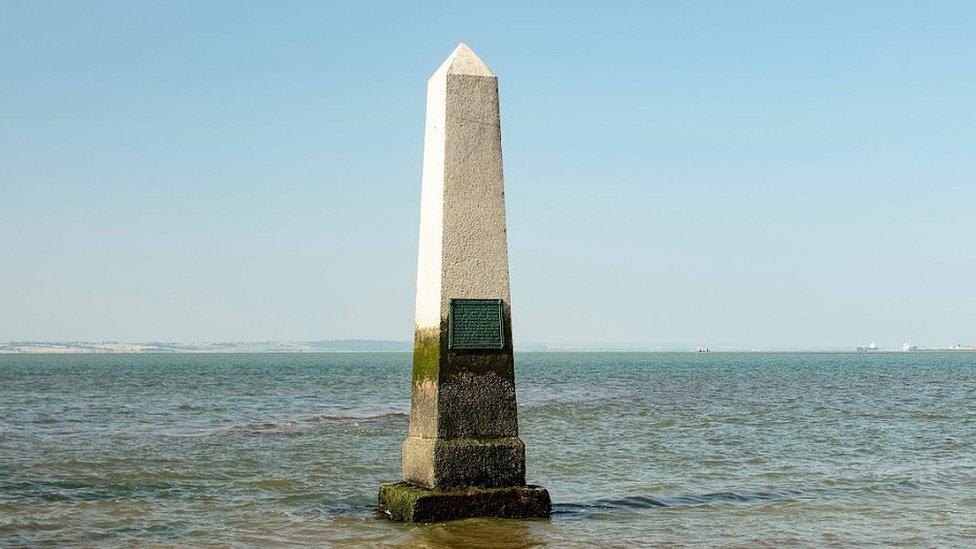
The Crow Stone monument was built between 1836 and 1837
At 26ft (8m) tall, the Crow Stone obelisk on Chalkwell beach in Leigh-on-Sea, Southend, was erected between 1836 and 1837 - replacing a previous stone from 1755.
It marked the eastern boundary of the City of London's control over the River Thames.
The City of London had purchased the rights of control from King Richard I in 1197 and took charge of the fisheries and tolls along the Thames and part of the River Medway.
Although it lost control of the river to the Crown in 1857, its a reminder of the historical events that took place, as well as the City of London's determination to retain power and influence.

Skegness Town Hall in Lincolnshire
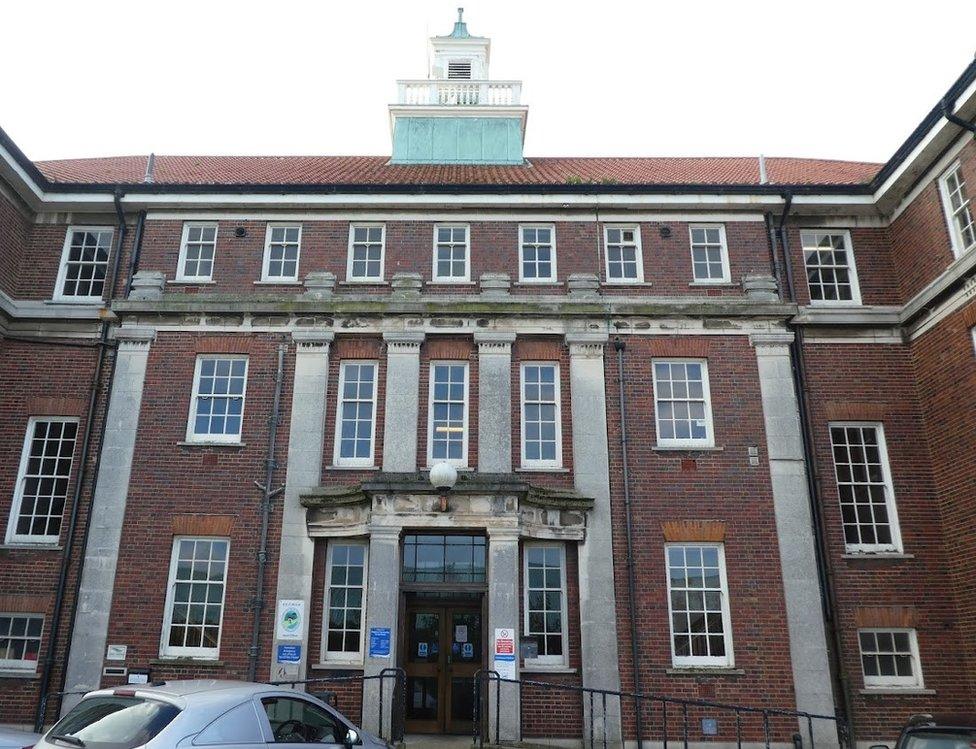
Skegness Town Hall was originally built as a convalescent home
Built in 1926 as a convalescent home to the designs of architect William Henry Ansell, it was re-purposed as the seaside resort's town hall in 1964 and is now used as council offices.
It was built by the National Deposit Friendly Society as a memorial to members who fell in World War I and was opened by Queen Victoria's granddaughter, Princess Marie Louise, who was accompanied by Neville Chamberlain, the then health minister.
By the late 19th Century, Skegness became a well-known health resort as it offered fresh air and the healing properties of sea water, with many convalescent homes dotted along the Lincolnshire coast such as this one.
Architecturally, the neo-Georgian site was inspired by the typical Palladian plan popular at the time, consisting of a central building flanked symmetrically by pavilions and well-preserved internal features.

- Published18 June 2021

- Published17 June 2021
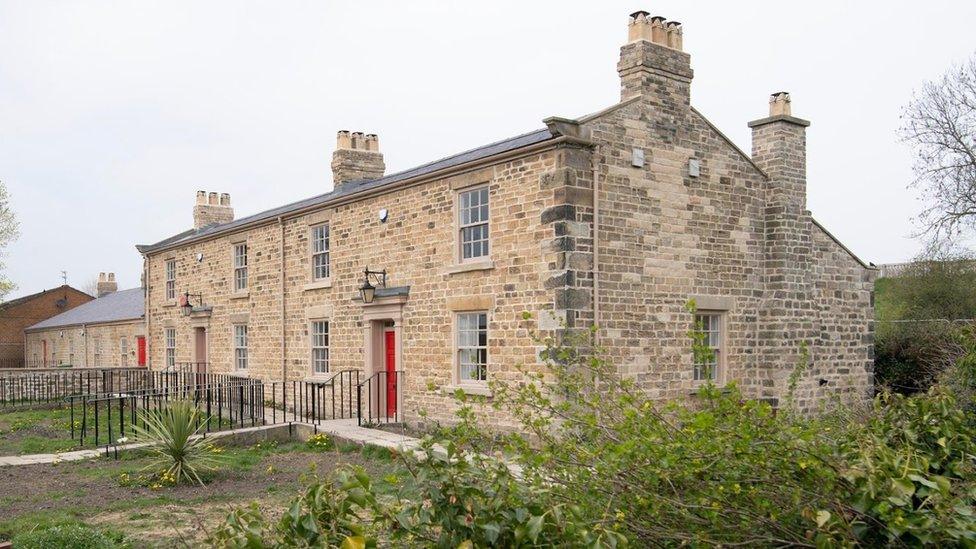
- Published30 April 2021
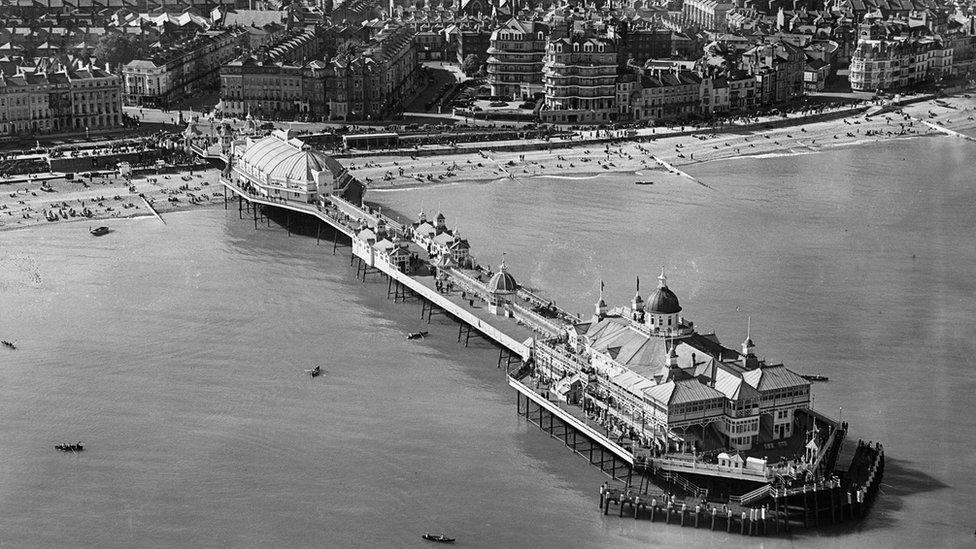
- Published14 April 2021
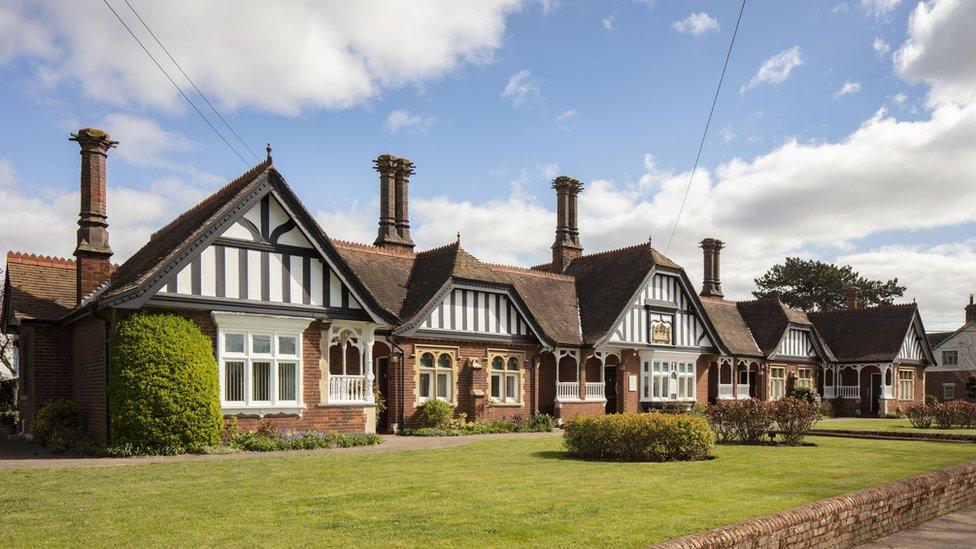
- Published9 October 2020
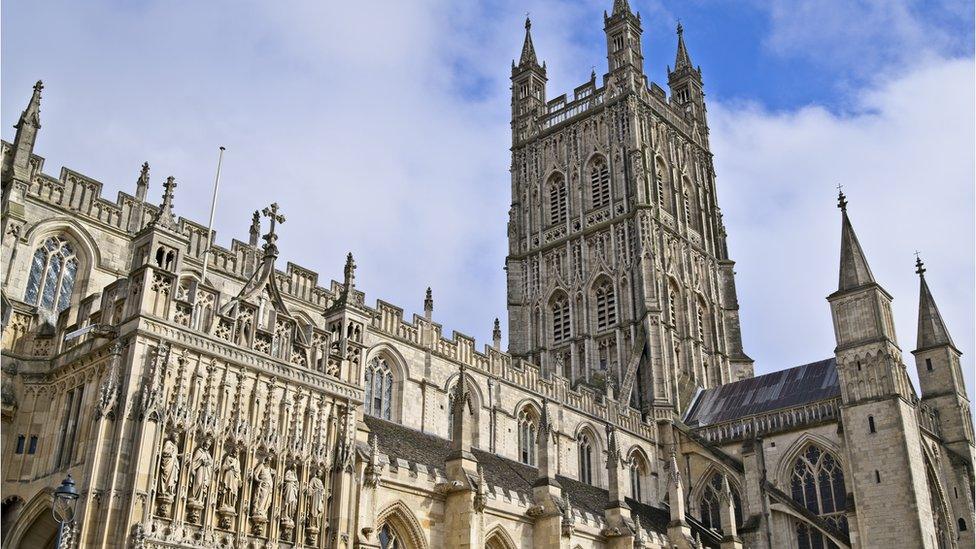
- Published20 December 2019
